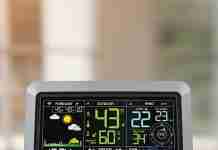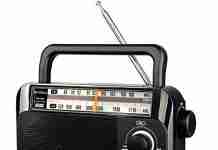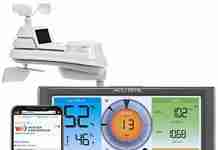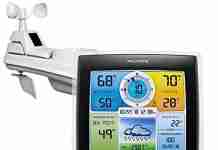Curious about installing a home weather station on your roof, but unsure of the safest method? Look no further! In this article, we will guide you through the simple steps to ensure that your weather station is securely and safely installed on your roof. By following our expert tips and advice, you’ll be able to confidently set up your own weather station and start tracking the ever-changing conditions with ease.
Review contents
Choosing the Right Location
When it comes to installing a home weather station, choosing the right location is crucial. There are a few key considerations to keep in mind as you decide where to place your weather station. First and foremost, you’ll want to find a spot that is free from obstructions and provides a clear and unobstructed view of the sky. This will ensure accurate readings and prevent interference from nearby buildings or trees.
Another factor to consider when selecting a location is the ease of access. You’ll want to choose a spot that is easily reachable for regular maintenance and calibration. Additionally, consider the proximity to power sources and internet connectivity, as this will determine your options for wiring and connectivity.
Preparing for Installation
Before you begin the installation process, it’s important to gather all the necessary equipment and tools. This may include a mounting bracket, screws, a wrench, and any other necessary hardware. By having all your tools on hand, you’ll be prepared and ready to tackle the installation process.
In addition to collecting the necessary equipment, it’s essential to check local regulations before installing your weather station. Some areas may have restrictions on the placement of weather stations or require permits for installation. By familiarizing yourself with these regulations, you can ensure a smooth installation process without any legal complications.
Finally, safety should always be a top priority when installing a weather station. Be sure to take necessary precautions, such as wearing protective gear and using proper safety techniques. It’s also important to consider the weather conditions on the day of installation and avoid installing the station during inclement weather.
Mounting the Weather Station
Once you’ve chosen the perfect location for your weather station, it’s time to mount it securely. There are a few options for mounting methods, depending on the type of weather station you have. The most common methods include wall mounting, pole mounting, or roof mounting. Choose the method that best suits your needs and follow the manufacturer’s instructions for installation.
Attaching the mounting bracket is the next step in the process. Ensure that the bracket is securely fastened to the chosen mounting location, using the appropriate screws or other hardware. It’s essential to double-check the stability of the bracket to prevent any potential accidents or damage to the weather station.
Once the mounting bracket is in place, it’s time to secure the weather station to the bracket. Carefully follow the manufacturer’s instructions for attaching the weather station to the bracket, ensuring a tight and stable connection. This step is crucial in preventing any movement or shifting of the weather station, which could affect the accuracy of the readings.
Sensor Placement
Proper sensor placement is key to obtaining accurate weather data from your station. Each sensor has specific requirements for optimal performance, so understanding these requirements is crucial.
Temperature and humidity sensors should be placed in a location that represents the average conditions of the area. Avoid placing them in direct sunlight or near heat sources, as this can result in inaccurate readings. Instead, choose a shaded area that is representative of the overall temperature and humidity.
For wind speed and direction sensors, it’s important to position them in an area that is free from obstructions. This means avoiding the proximity of tall buildings, trees, or other structures that could disrupt the airflow. Mount the sensors at an appropriate height, typically 10 to 30 feet above ground level, to ensure accurate wind measurements.
Wiring and Power Supply
Proper wiring is necessary for the weather station to function correctly. Follow the manufacturer’s instructions for wiring the sensors to the weather station console, ensuring that each wire is securely connected. It’s essential to handle the wires with care and avoid any sharp bends or kinks that could damage the wiring.
When it comes to power supply, there are different options to consider. Some weather stations are battery-operated, while others require an external power source. Choose the option that works best for your situation and follow the manufacturer’s instructions for proper installation and connection.
To protect the wiring against weather elements, it’s important to use appropriate measures. This may involve using conduit or protective tubing to shield the wires from rain, snow, or other harsh conditions. Additionally, ensure that all connections are securely sealed to prevent water damage to the wiring.
Connecting to Internet or Network
If you want to access your weather station data remotely or share it online, you’ll need to connect it to the internet or a network. There are different connectivity options available, depending on your weather station model and your available network infrastructure.
Setting up a Wi-Fi or Ethernet connection is one common method for connecting your weather station. Follow the manufacturer’s instructions for configuring the network settings and establishing a reliable connection. This step may involve entering Wi-Fi passwords or configuring IP addresses, so ensure that you have all the necessary information on hand.
Once the network connection is established, you can configure the desired settings for data transmission and online access. Some weather station console models come with built-in software for data logging and transmission, while others may require the use of third-party software or online platforms. Take the time to explore your options and choose the solution that best fits your needs.
Calibrating and Testing
Calibration is a critical step in ensuring the accuracy of your weather station’s measurements. Follow the manufacturer’s guidelines for calibrating each sensor, taking into account any unique requirements for your specific model. Calibration typically involves comparing the readings of your weather station to known standards and making necessary adjustments.
After calibrating the weather station, it’s important to test its accuracy. Compare the readings of your weather station to those of a reliable and accurate reference source, such as a professional weather station or local weather reports. The readings should be consistent and within an acceptable range of the reference source.
If you encounter any issues with sensor functionality or discrepancies in the readings, refer to the troubleshooting guide provided by the manufacturer. This guide should provide step-by-step instructions for identifying and resolving common issues. In some cases, you may need to contact customer support for further assistance.
Regular Maintenance
To ensure the longevity and reliability of your weather station, regular maintenance is essential. Cleaning and inspecting the sensors should be a part of your routine maintenance schedule. Remove any dirt, debris, or cobwebs that may accumulate on the sensors, as these can affect the accuracy of the readings. Inspect the sensors for any signs of damage or wear, and replace them if necessary.
Another aspect of regular maintenance involves verifying data storage and transmission. Check that the weather station is properly logging and storing the data as expected. Ensure that the transmission to your chosen online platform or software is functioning correctly, and that the data is being displayed and recorded accurately.
Updating the firmware and software of your weather station is also an important maintenance task. Manufacturers often release updates to improve functionality or address any software bugs or vulnerabilities. Regularly check for updates and follow the instructions provided by the manufacturer for installing the latest firmware and software versions.
Weather Station Security
Protecting your weather station against physical damage is crucial to its operation and longevity. Choose a mounting location that minimizes the risk of damage from external factors, such as falling debris or vandalism. Consider installing a protective cover or housing to shield the weather station from harsh weather conditions, UV exposure, or potential tampering.
In addition to physical security, it’s important to implement measures to protect the data and privacy of your weather station. Ensure that any online connections or data transmissions are properly secured and encrypted. If accessing your weather station remotely, use strong passwords and enable any additional security features provided by the manufacturer.
Implementing security measures also involves being aware of potential vulnerabilities and taking necessary precautions. Regularly review the manufacturer’s guidelines for security best practices and stay informed about any software updates or security patches. By remaining vigilant, you can mitigate potential risks and ensure the integrity of your weather station and its data.
Conclusion
Congratulations on successfully installing your home weather station! By following the steps outlined in this comprehensive guide, you’ve taken the necessary measures to ensure accurate and reliable weather data for your location. Now it’s time to take the next steps and fully enjoy and utilize the valuable data provided by your weather station.
Whether you’re an avid weather enthusiast or simply curious about the local weather conditions, your weather station will provide insights and information that can enhance your daily life. Monitor temperature, humidity, wind speed, and more to make informed decisions about outdoor activities, gardening, or even energy usage.
Don’t forget to share your weather station data with other weather enthusiasts in your community or online. Participate in local weather networks or online platforms to contribute to a broader understanding of weather patterns and trends. By sharing your data and experiences, you’ll be part of a larger community of weather enthusiasts and contribute to scientific knowledge about our ever-changing climate.


































